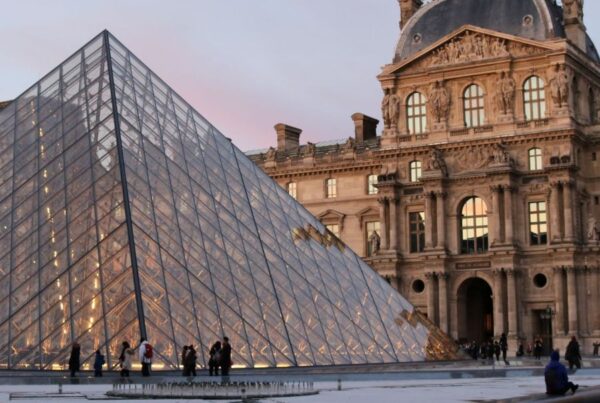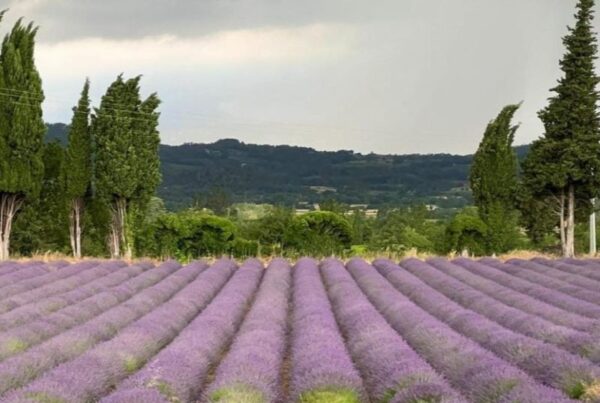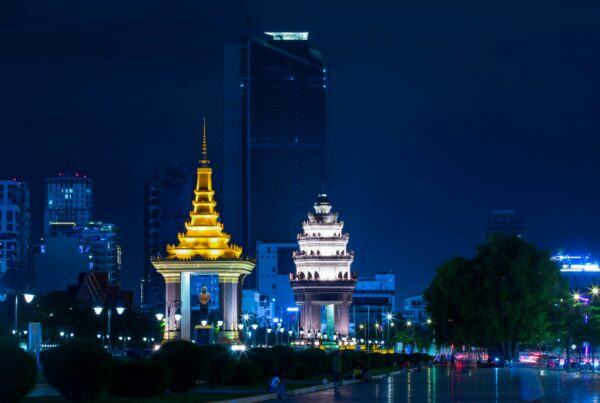South Korea is an incredible country which has long been an underrated travel location, but in the last few years this is starting to change. Wider awareness of Korean music, food and entertainment has spread fast and travelers are waking up to everything the country has to offer, so we’re very happy to be able to include South Korea in our 2025 tours.

If you’re wondering if this part of southeast Asia should be the destination of your next adventure, here is why we think it should be on your travel hit list:
Incredible Korean Cuisine
Let’s start with an easy one; the unbelievably good food.
Korean food culture has always been closely linked with health, focusing on lots of plant-based foods, small amounts of meat and fresh seafood and plenty of fermented things. The traditional Korean diet, hansik, is well regarded by health experts, with a great balance and beneficial ingredients, but is no less delicious for being so healthy!

When you visit South Korea you will have plenty of opportunity to try lots of different things, but here are a few of the common ingredients and dishes to look out for:
- Kimchi – The most well-known Korean export, kimchi is a staple at pretty much every meal. The classic version is made with cabbage but there are hundreds of different types to try. The process of making kimchi, Gimjang, was classed as an Intangible Cultural Heritage by UNESCO because of how important it is to the Korean people.
- Gochujang – a spicy paste made from fermented soy beans, chili powder and rice flour powder. Similar to Hungarian paprika, there are different spice levels available, with milder versions more smoky/sweet.
- Tteok – soft rice cakes that are used in a wide range of dishes
- Doenjang – a fermented savory soybean paste, used as both a condiment in its raw form and as a seasoning for other dishes.
Eating out in restaurants in South Korea is the norm, as is sharing food. Banchan (a variety of small side dishes like kimchi, salads and pickled vegetables) are always present on the table to accompany your food along with various sauces.

If you’re not a fan of super spicy food you don’t have to worry, South Korean cuisine is all about balance so there are just as many mild dishes as hot ones. Watch out for buldak, tteokbokki and jjambbong as these are all very spicy foods!
You can also opt for street food from one of the numerous stalls and markets all over South Korea, which is especially fun in cities like Seoul which have tons of options.
Join us for a truly unique and memorable trip in 2025.
Every itinerary is built with care, mixing the big sights with the kind of authentic, everyday experiences that give a destination real meaning.
In addition to exploring, you’ll have the opportunity to mix with locals, experience authentic food, and build connections all over the globe.
Our tours have a little something for everyone, we can’t wait for you to see what we have in store.
Discover more and book your 2025 adventure here.
The Natural Wonder of South Korea’s Landscapes
South Korea has a diverse range of landscapes to explore, so as fun as the cities are, the stunning beauty of the national parks, springtime cherry blossoms, long coastlines and green forests are unmissable. On the east coast people flock to see the breathtaking sunrises and there are plenty of spots to go hiking, swimming and exploring.
Jeju Island
Jeju Island should be at the top of any list of what to do in South Korea (and included in our upcoming tour). This UNESCO World Heritage Site is a volcanic island found off the southern coast, with the Hallasan volcano at the center – the volcano is dormant and has not erupted in thousands of years.
Home to the indigenous Jeju people, Jeju island is simply stunning.

Ancient craggy cliffs give way to dense forest, there are waterfalls, fields of flowers and the remnants of other impossibly old, extinct volcanoes. There are 27 different trails around the island perimeter so you have lots of routes to explore – check out all the trails here.
The Hallasan National park protects the central volcano (Hallasan mountain) on Jeju island, which has a huge crater lake and is home to a Buddhist temple that was originally built nearly 1000 years ago.
These beautiful landscapes make Jeju island a popular tourist destination, with multiple flights daily to and from Seoul, so it is easy to add in a few days here to your South Korea adventure.
Seoraksan National Park
There are many national parks in South Korea, and while the Hallasan National park on Jeju island is incredible, the Seoraksan park is in the north east of the country, making it more accessible – some people visit on a day trip from Seoul.

Including the third highest peak in South Korea, the national park feels almost Alpine, with tall mountains, rivers and green trees. There are lots of different hiking trails, Buddhist temples and if hiking isn’t your thing you can take a cable car high up to the top of the Seoraksan mountain.
Korea’s Historical Significance
When most people think of Korea, they think of the division between South and North Korea following the end of the war in the 1950’s. However the country of Korea has a much longer history than that, with plenty of places where you can learn about their culture and historical events.
A brief history of Korea
The history of Korea stretches back thousands of years, with the earliest version of a Korean kingdom appearing around the same time as ancient Rome was founded. Often in conflict with the neighboring Chinese dynasties, by the 7th century the whole of the Korean peninsula had been unified.
Through the subsequent centuries, Korea became a cultural, religious and economic powerhouse, especially under the Silla and Joseon dynasty. Wealth from widespread trading poured into the country, multiple universities were founded, Buddhism flourished and big technological advancements were made.

By the late 19th century the country was starting to struggle economically, and Korea was forcibly annexed by Japan in 1910. The Japanese tried to destroy the Korean language and culture, leading to multiple rebellions. However Japanese rule in Korea did not end until after World War II, which led to the creation of the modern state of South Korea.
Sadly while the Allies originally intended to unify the whole of Korea once the Japanese left, tension between the US and Soviet Union in Russia led to the county being split in two. These tensions broke out into outright war in the 1950’s, with the Korean War devastating the country.
South Korea has since come into its own, especially in recent years, and Korean culture is becoming far better known around the world.
Learning about South Korea’s history
There are a lot of different places where you can go to learn about the history of South Korea. There are some fantastic museums, particularly the National Museum of South Korea in Seoul, but you can also visit many historical sites for a more immersive experience.
Also in Seoul, the Bukchon Hanok village is a neighborhood where the traditional Korean houses (hanok) have been preserved. Some have been converted into cafes and other businesses, but some Korean people still live here so you can get a real sense of the hanok village as it was in the past.
There are plenty of royal palaces to see in Seoul as well, with the Gyeongbokgung palace being the most well known.

The Changdeokgung royal palace is particularly fascinating as the complex was built to blend into the landscape so has a very different feel to the more formal structure of Gyeongbokgung palace.
Away from Seoul you can explore the city of Gyeongju which was the ancient capital when Korea was at its most powerful. Here you’ll find multiple sacred Buddhist sites, royal tombs and burial mounds, ancient villages and stunning artefacts on display in museums.

For an insight into much more recent history, it is possible to visit the demilitarized zone between North and South Korea.
This is a fascinating day trip from Seoul that really makes clear the legacy of the war and is something that most travellers don’t even think about doing. We feel it is an important stop for visitors which is why we include the trip to the demilitarized zone in our South Korean itinerary.
Fun Korean Culture
The final reason you should visit South Korea is to immerse yourself in South Korean culture. Across the whole country you will find an attractive way of life, with passionate people who care about their traditions and also look to the future.
Seoul, the vibrant capital city of South Korea is an eclectic mix of ultra-modern and traditional architecture. Go shopping in the Myeongdong and Gangnam areas for the very latest in Korean fashion and beauty brands, or rent traditional hanbok to wear when walking around one of the royal palaces.

In South Korea you’ll be able to get involved with the fun nightlife, with many bars, clubs, and coffee shops to choose from. Try soju (a clear spirit distilled from grains), rice wine or Korean craft beers, or stick to coffee, which the South Koreans do very well. Whatever you’re drinking, the fun K-pop music blaring out all night will keep you energized!
Don’t miss out on another of South Korea’s major cities Busan, a bustling port city with a mix of modern and traditional architecture. Home to lots of financial institutions and other commercial entities thanks to the worldwide connections at the huge port, Busan also has a huge number of temples and sacred places to see.

South Korea is a land where modernity and tradition coexist and thrive together, creating a wonderful atmosphere for visitors to immerse themselves in.
We can’t wait to start sharing this fantastic country with our fellow adventurers and showing you everything South Korea has to offer, so if you’re interested in learning more check out the tour details here. You can also contact us with any questions you may have about traveling to South Korea, or leave a comment below.






